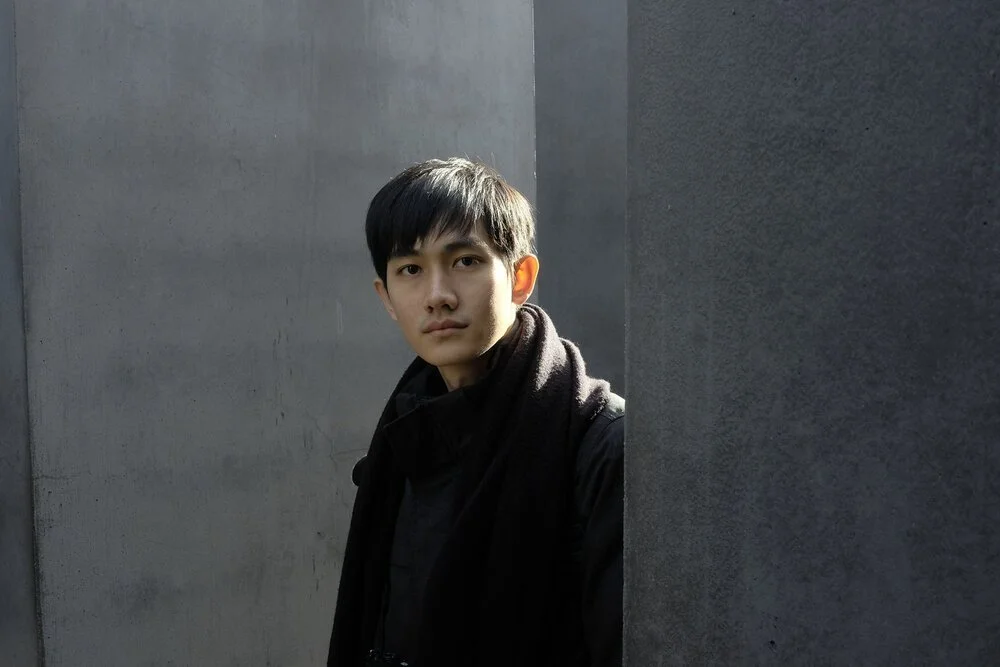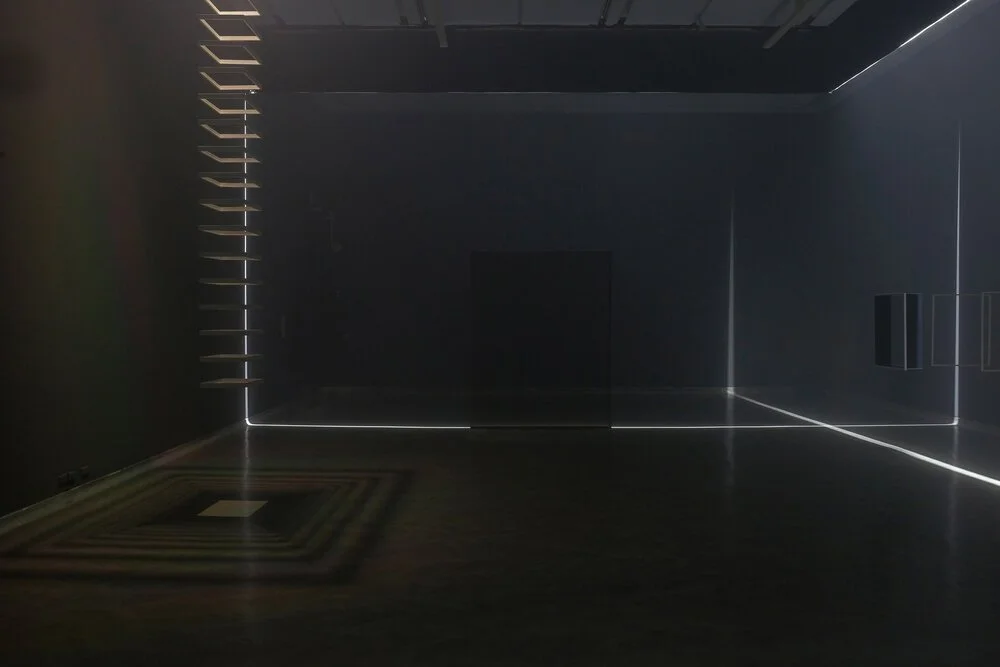Fresh Face: Sornrapat Patharakorn
On architecture, Charoen Contemporaries and BRANDNEW Art Project
A&M's Fresh Face is where we profile an emerging artist from the region every month and speak to them about how they kick-started their career, how they continue to sustain their practice and what drives them as artists.
Sornrapat Patharakorn.
Born in 1991 in Bangkok, Thailand, Sornrapat Patharakorn is an artist focused on human perception within the physical environment. He graduated from Chulalongkorn University with a Bachelor of Architecture and worked in the profession before receiving attention for his artistic practice. Since then, the young artist has presented work at various venues in Thailand as part of the Bangkok Biennial Pavilion (2018), and at Spectrosynthesis II (2020) in collaboration with Samak Kosem. In 2019, he was selected as one of the BRANDNEW Art Project artists.
Sornrapat Patharakorn, Golden Hour: from 8 minutes ago to what is yet to come, 2018, site specific installation, dimensions variable. Image courtesy of the artist.
Sornrapat’s works utilise, focus or redirect light to create spatial experiences. Often, the existing conditions of a place are vital parts of his installation, and these include both man-made features and natural elements such as the direction of sunlight. An important piece by the artist is Golden Hour: from 8 minutes ago to what is yet to come (2018), a site-specific installation outside Praisaneeyakan in Bangkok. The building is a truncated replica of the original 1871 mansion which faces a second demolition. Sornrapat’s intervention was a four-metre tall mirror tilted at an angle that reflects sunlight to the opposite end of the compound, creating a light image of the window which only lasts for fleeting moments. Its transience suggests a glimpse into the future marked by continuous change.
Interview
Sornrapat Patharakorn, Now, Here and Elsewhere, 2019, site specific installation at the Bangkok University Gallery Auditorium. Image courtesy of the artist.
Could you talk about your background? And at what point in your life did you decide to pursue a career in art?
My university education was in architectural practice while my parental backgrounds are very scientific, so I grew up trying to be as objective as possible and that is still a part of my personality. I think I have always wanted to make art, but the different parts of life come together when I designed exhibitions for Titirat Skultantimayta, my girlfriend since college. I was still working in a house design firm then but that was my introduction to contemporary art.
Ideas for projects I wanted to realise gradually accumulated in my mind and they still have architectural traits. However, it was hard to receive approval for spatial projects because they were normally huge, especially when I had no exhibition record initially. My first exposure as an artist was through exhibiting with Charoen Contemporaries.
Could you share how you’ve maintained your practice after graduation? What are the important factors that allowed you to keep going?
I interned at the firm called A49 right after I finished my studies in 2014. The internship was a necessary component for my graduation and I was a junior designer in a faction called studio 1 which is responsible for public projects such as resorts, educational centres, etc. I was later offered the job as a junior architect at A49 House Design (A49HD) which is also part of the A49 group. After resigning, I worked as a teaching assistant for a course on contemporary art at Commde, Chulalongkorn University, and also as a professional exhibition designer at Very Kind Invention (Bangkok). In 2018, I was a full-time artist while applying for further studies.
Currently, I am pursuing my Master of Fine Arts at Bauhaus University Weimar in their Public Art and New Artistic Strategies programme. It was a little difficult to find the courses that fit the spatial art I want to do. There is still a lot I wish to learn in material sensibility and in conceptualising and realising projects. I hope to grow as an artist with solid methods, a strong perspective, and the ability to integrate my thoughts into my practice, especially on social issues.
How did the opportunity for your first solo show come about? What was the process like preparing for it?
I had been preparing my ideas for some time and I submitted proposals to every available opportunity. I think it was Golden Hour, a work I did for Post Scripts curated by Charoen Contemporaries which led to the opportunity to do my first solo show. Charoen Contemporaries is a curatorial collective founded in Bangkok and their past projects include Post Scripts which was presented as part of Bangkok Biennale 2018, and Early Years Project #4 at the Bangkok Art and Culture Centre (BACC). Pojai Akratanakul, Pongsakorn Yananissorn, Nut Srisuwan, Napat Vatanakuljaras, and Abhijan Gupta are among their members.
Pojai and I actually studied together in high school, but I think we had no idea at the time that our paths would cross again. Nevertheless, we stayed in contact and I got to know other members of the collective through a network of friends. Titirat and Napat are both artists selected for the 2015 edition of BRANDNEW Art Project, the annual Bangkok University programme through which I had my first solo exhibition in 2019.
My show comprised of 2 installation works. Here and Now was made on site in the white cube space at Bangkok University Gallery, with LED strips and curtains installed to the ceiling. The second piece ‘Now, Here and Elsewhere’ was a site-specific and time-specific work in the auditorium nearby. It was technically simple because the venue provided most of the conditions for the piece such as space and the sunlight at particular time periods. I just had to bring a haze machine and the work could happen on sunny afternoons.
I have always wanted to challenge the boundaries of perceivable spaces and the project dealt mainly with the context in which art is presented. The first challenge was creating a proposal which illustrates what we can expect because it is often hard to imagine how the works will turn out looking. The second difficulty I faced had to do with the technical aspects and hardware. Half of my research time is dedicated to deciding what kind of light bulbs I use, the measurements, what degree I should tilt this mirror, and the optimal date and time for the alignment of each element.
Who has been a mentor or an important artistic influence? And why?
There are many architects and educators I look up to, but meeting and learning from Yap Sau Bin greatly contributed to my art practice. He was the guest curator for BRANDNEW Art Project 2019 and gave me a lot of references and guidance, as both a curator and an experienced artist. These all made me understand better the motivations behind my work, and how it can matter to a wider range of people as well.
Sau Bin made me go beyond the experiential aspect of art to the theoretical discussions that could apply to my practice. I am attracted to art because I have difficulty communicating verbally at times, and he introduced many texts that helped me explain aspects of the work that I initially struggled with. After our interactions, I thought a lot about the frame of orientation and began looking from perspectives outside of my usual worldview. I do not remember exactly how it happened but he taught me to zoom in and out when thinking of my projects.
Sornrapat Patharakorn, Here and Now, 2019, mixed media installation, 1000 x 1700 x 530cm. Image courtesy of the artist.
What was one important piece of advice you were given?
My great-grandmother told me this: “Take good care of your mind”.
Could you share your favourite art space or gallery in your country? Why are you drawn to that space and what does it offer to you or your practice?
I like frequenting the N22 complex as there are a bunch of spaces bundled together. It is fun to be with the community at exhibition openings. I also frequent the Bangkok University Gallery and it’s a blessing whenever I get to talk to the professors there, such as Ark Fongsmut, Thanet Awsinsiri, Nipan Oranniwesna and Manipa Jayawan. There are also a number of places that make me miss Bangkok incredibly: Ku Bar, Nova Contemporary, and Bangkok Citycity Gallery.
What are your hopes for your own local art scene, and regionally as well?
The Bangkok scene already exceeds my expectations in many ways. However, I hope for a stronger connection between the art scenes and the wider public. This is a challenge because the societal progress and improvements in the education system are deliberately suppressed by politics. As a result, there is a lack of social cohesion and space for people to connect. The current government is more interested in serving a small network of oligarchs in Thailand than the betterment of society.
To be optimistic, I think art-making is how we keep our freedom of expression and people can turn to it when other forms of expression are oppressed. There is still a long way to go before contemporary art is appreciated by the majority, but in the meantime, we can shape our practices to become like no other.
In 2020, Titirat and I are opening an exhibition in Osaka at YOD gallery. I am also looking forward to collaborating with supernormal studio on a public art project in Songkhla Lake.
Fallen Cycle by Sornrapat Patharakorn and Titirat Skultantimayta is on view from 29 February to 21 March 2020 at YOD Gallery, Osaka, Japan.





